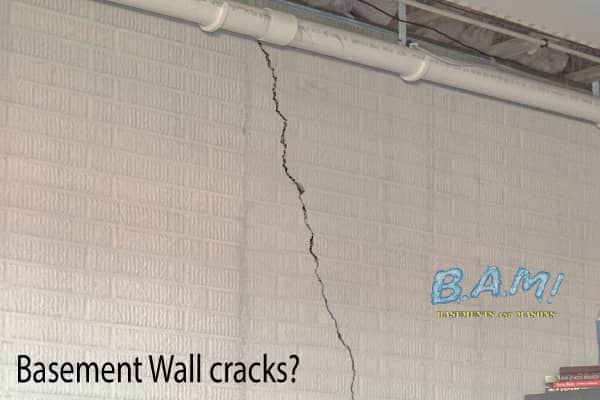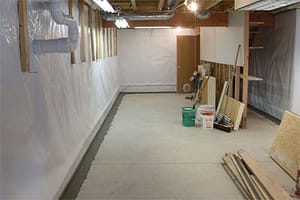Best Basement Waterproofing - Questions
Best Basement Waterproofing - Questions
Blog Article
Unknown Facts About Best Basement Waterproofing
Table of ContentsTop Guidelines Of Best Basement WaterproofingBest Basement Waterproofing - QuestionsA Biased View of Best Basement WaterproofingThe Best Basement Waterproofing DiariesSee This Report on Best Basement Waterproofing
uses excavation methods towards all-time low of the structure's structure. involves getting rid of dampness after it has actually gotten in the basement. AdvantaClean's qualified specialists and technicians will find the water resource. If wall or slab splits are present, we will certainly inject polyurethane and epoxies right into the fractures and secure the concession, stopping more moisture from going into.Appropriate rating around the home to direct moisture far from the framework. Installing, repairing, or cleansing gutters and downspouts. Inside or outside waterproofing with filler, sealer, and/or water resistant paint. Setting up basement ventilation systems, conditioning systems, or basement dehumidifier systems to obtain water out of your cellar. Picking AdvantaClean's cellar waterproofing solutions is an effective way to treat moisture and stop mold and mildew from endangering the framework of your home and the health of your family members.
If there's condensation outside of the foil, you have high moisture in your basement. Fix it with a mobile room dehumidifier or a whole-house humidifier system as opposed to waterproofing items. If the aluminum foil has condensation on the inside surface area (beside the wall), the dirt around your home may be naturally damp from a high water table or poor dirt drainage.
You can waterproof simply your indoor walls, which might solve the problem. Or you can waterproof your exterior wall surfaces, which is a far better wager but more pricey. Below's the inside story on the different kinds: These thick finishes are cement-like. Once they dry, they stick permanently to concrete and stonework walls.
The Greatest Guide To Best Basement Waterproofing
Swirl the brush at the final stage of application to give the wall surface an appealing, finished appearance. Concrete waterproof coatings can't be put on previously painted surfaces; check the label. A 5-gallon bucket costs about $60. Additionally called densifiers, they appropriate only for wall surfaces that haven't been repainted or sealed.
You clean, roll, or spray it on a lot even more heavily one gallon covers just 75 square feet, not the 300 square feet common with standard paint. Water-proof paint is great for DIY application. You can apply it over repainted surface areas, and paint over it once it's treated (one gallon costs $37).
It can set you back $10,000 to $15,000, depending upon the job required. Outside waterproofing includes digging deep into throughout the residence fully depth of the foundation wall surfaces, then installing a water resistant finish or membrane covered by drainage panels. The panels provide a very easy path for water to stream down to an outside French drain at the bottom of your foundation.
8 Simple Techniques For Best Basement Waterproofing
We have actually all been caught in a storm with no umbrella or raincoat. And it's always a recipe for disaster: everything's wet, your hairdo is wrecked, and things are getting musty. A cellar without blog here waterproofing is kind of like that. Minus the wrecked coiffure part. Your cellar does not desire to experience a rainstorm without proper security equally as high as you do not want to.

Outside waterproofing is a waterproofing approach that involves sealing your home from the exterior. It's kind of like a moat around a castle. It includes digging a trench around your whole house to the structure (about 8 to 10 feet down). The structure walls are then cleansed, sealed, and covered with a water resistant membrane layer or sealant.

Not known Facts About Best Basement Waterproofing
It's a more involved process that requires digging up your lawn, which is costly and lengthy. Outside waterproofing entails eliminating every little thing bordering the house, consisting of porches, driveways, pathways, landscaping, air conditioner devices, decks, and so on. If any of the job was done improperly and water is still entering your cellar, there isn't much you can do read review to fix or fix it.
Interior cellar waterproofing entails waterproofing from the within. Any kind of water that leakages into your cellar is redirected before it touches your flooring. It's kind of like wearing a raincoat under your clothes. It entails two points: a water drain track and a sump pump. It functions by securing the within your basement wall surfaces and floors so water that attempts to enter is channeled out via a sump pump.
It's an effective technique to water-proof your basement. The downside of interior cellar waterproofing primarily has to do with the setup process. This method calls for kept items, furniture, and built-in shelving or closets to be relocated from touching the cellar walls. And throughout installation, your cellar can not be utilized. The greatest distinction in between the two approaches is this: Outside waterproofing is a preventative remedy and interior waterproofing is a rehabilitative option.
Indicators on Best Basement Waterproofing You Need To Know
In conclusion, exterior and interior basement waterproofing are both reliable techniques of protecting your home from water damages. Outside waterproofing produces a barrier that avoids water from entering your home, while indoor waterproofing redirects water that does enter your home. And it is very important to keep in mind that exterior waterproofing is a pricey and turbulent setup procedure when compared to interior waterproofing.
Whichever method you pick, make certain you choose visite site a trustworthy and reliable specialist for the work. If you have any concerns about basement waterproofing, please get to out to us.
You can fill up out our type here. Best Basement Waterproofing, start a conversation in the bottom right-hand edge, or call us at 1-800-827-0702
Report this page